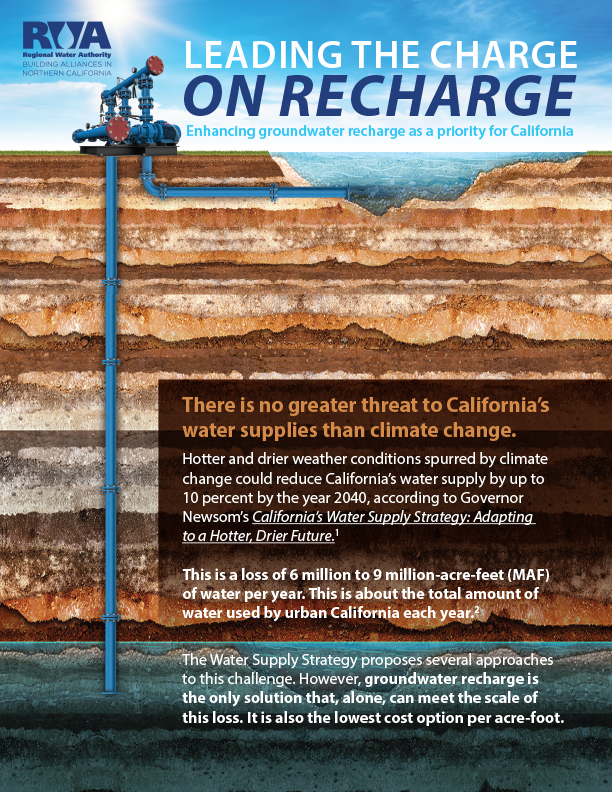GROWING THE WATER BANK
Building resilience in the Sacramento region and beyond
Sacramento-area water providers have created a plan for a 21st-century water system adapted to the impacts of climate change. The key: Banking excess water during wet times for withdrawal later during dry times.
But we need financial help from state and federal partners to fully develop the collection of groundwater wells, pumps and pipes needed to operate the Water Bank.
Creating a 21st-Century Water System
The Sacramento region has long used a combination of surface water and groundwater supplies. And, over the
past two decades, local water providers have been practicing water banking on a smaller scale, which has helped
groundwater levels recover from previous drops.
Currently, the Water Bank can sustainably recharge enough water to serve over 180,000 average homes for
a year. But much more could be done to bank water underground.
Investing $300 million could boost the Water Bank’s storage and withdrawal capacity to serve 270,000 Sacramento-area homes for a year.

Investing Here Provides Statewide Benefits
As a source watershed, expanding the Water Bank is also essential for California’s water supply and delivery system.
During dry times, when local water providers use groundwater from the Water Bank, they free up valuable surface water in California’s lakes and rivers for other needs, as well as sustain important aquatic habitat and endangered fish.
Local water providers can also temporarily transfer available surface water during dry times to assist people and the environment after local needs are met.
Expanding this system is vital to helping California adapt to changing weather patterns and water flows, be more resilient to droughts and better protected from winter floods.
Water Banking Makes Sense for California
Hotter and drier weather conditions spurred by climate change could reduce California’s water supply by up to 10 percent by the year 2040. That’s a loss of 6 million to 9 million-acre-feet of water per year — about the total amount of water used by urban California each year.
Banking water — also known as groundwater recharge — is the only solution that, alone, can meet the scale of this loss. It is also the lowest cost option per acre foot.
Learn how California’s groundwater recharge potential and cost compare to conservation, recycled water, desalination and stormwater capture.




